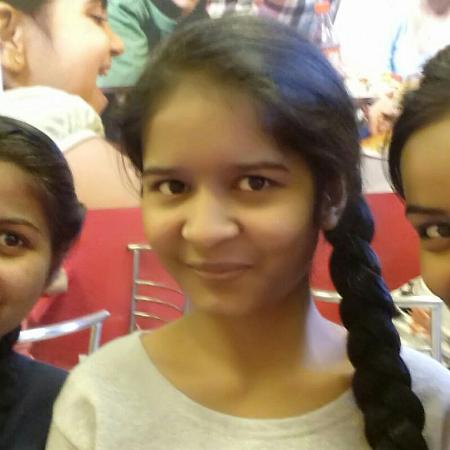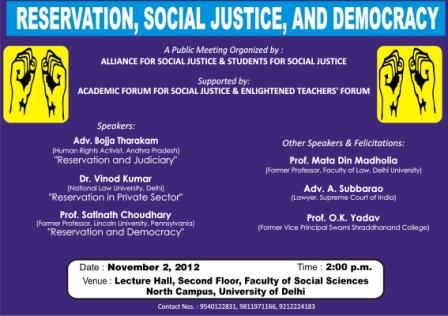Tejaswini Tabhane
 Shashi Tharoor is an author, politician and former international civil servant who is also a Member of Parliament representing the constituency of Thiruvananthapuram, Kerala. This write-up is a rebuttal to his three-year-old article Why Caste Won’t Disappear From India, which I came across recently. While three years’ span is too big and my scholarship too small in comparison to Tharoor’s stature, I am still venturing to write this response because I think this intervention is necessary.
Shashi Tharoor is an author, politician and former international civil servant who is also a Member of Parliament representing the constituency of Thiruvananthapuram, Kerala. This write-up is a rebuttal to his three-year-old article Why Caste Won’t Disappear From India, which I came across recently. While three years’ span is too big and my scholarship too small in comparison to Tharoor’s stature, I am still venturing to write this response because I think this intervention is necessary.
The headline of Tharoor’s article raises a question as to why it is impossible for caste to disappear from India, and I was expecting him to answer it or at least analyze the forces responsible for its perpetuation. But he doesn’t. Tharoor mainly focuses on two things: (i) the outrage senior journalist Rajdeep Sardesai faced when he expressed his joy on Twitter over the elevation of two members of his Gaud Saraswat Brahmin caste to the cabinet, and (ii) how he was born and brought up unconscious of his own Nair caste.
Sardesai’s tweet read, “Big day for my Goa. Two GSBs [Goud Saraswat Brahmins], both talented politicians, become full cabinet minister. Saraswat pride!! @manoharparrikar and Suresh Prabhu.” This tweet was expectedly criticised by many, which Tharoor also mentions in his article. But for him, Sardesai’s “Saraswat pride” is just another label one can lay a claim to, the way one would call themselves a Campionite or an Oxonian. But what Tharoor misses here is that a Brahmin’s caste pride comes with humiliation for other castes. If Tharoor indeed thinks that one’s caste identity (an ascribed status) can be equated with one’s other identities such as alma mater (an achieved status), then I must say that his understanding of caste needs to be questioned.
Merit, in this country, was made an attribute not of individuals but of castes. Being born a Brahmin was in itself a mark of greatness. Sardesai’s tweet seems to support this notion and hence it was rightly termed as casteist. Further, Tharoor psychoanalyzes Sardesai saying, “he [Sardesai] said what he did not because his caste matters so much to him but precisely because it doesn’t.” Later on I explain what role caste plays in a person’s life beyond defining their identity, but first, let’s evaluate following sentences:
“None of us would object if a Dalit leader advertised her pride in being a Dalit or called for Dalit solidarity. It would be the Indian equivalent of America’s “Black is beautiful” slogan or black pride campaigns.”
Sardesai’s caste pride cannot be compared with Dalits’ assertion of their identity because the two are located far away from each other in the pyramid of caste. While the former emanates from a sense of superiority (based on false notions of ‘merit’ and ‘eugenics’), the latter is an attempt to brush away centuries of humiliations and disabilities. Tharoor does acknowledge that Sardesai is celebrating the elevation of persons from an already privileged group to acquire more power and position but fails to question it.
Throughout the article, for Tharoor, caste exists only in kitchens, marriages, dining, rituals, electoral politics and such things. But he fails to recognise that caste is both the base and superstructure of Indian society and that both the relations of power as well as the forces of production are mediated through it. He writes:
I grew up thinking of caste as an irrelevance, married outside my caste and brought up two children to be utterly indifferent to caste, indeed largely unconscious of it. Even after I entered the hothouse world of Indian politics, I did not consciously seek to find out the caste of anyone I met or worked with. I hired a cook without asking his caste (the same with my remaining domestic staff) and have entertained all manner of people in my home without the thought of caste affinity even crossing my mind.
Here, Tharoor thinks that being “unconscious” of caste and thinking it to be “irrelevant” makes it disappear from one’s life. But does this blindness to caste take away the social, political and economical privileges one gets because of one’s “accident of birth” in a particular (upper) caste? It does not. So for Tharoor to say that caste was/is not present in his life and practice is a fallacious argument. The Nair caste which he belongs to holds a dominant position in the Malabar Hindu society. Anyone who belongs to Nair caste group is bound to get the advantages of his caste location, willingly or unwillingly; consciously or unconsciously.
Caste governs the distribution of resources and opportunities in Indian society. Caste is very much present in your life even if it is not directly visible to you because your social and economic capital is a production of your caste only. I must mention that being unconscious of caste is also a privilege derived from the dominant location of one’s caste. To be born in a privileged caste is not anyone’s fault but to refuse to even acknowledge “unearned benefits” accruing due to one’s caste and thereby claiming that the very mechanism that enforces them is absent in one’s life is not right.
I would say that Tharoor’s understanding of caste is narrow and superficial, something which one does not expect from a person of his stature and scholarship. But it’s partly because he observes caste from above. This can be seen when he reduces caste merely to an identity and writes:
“India is a land of multiple identities, and one of the key identities, inescapably, is caste … If it [caste] becomes more and more one of many interchangeable, mutable forms of identity — one fraternity of many that an Indian can lay claim to — it can cease to matter so much.”
Braj Ranjan Mani in his book Debrahminising History summarises the caste system as “a form of social stratification in which castes are hierarchised, occupationally specialised and separated from each other (in the manner of marriages, physical contact, food) by rules of purity and pollution.” He further writes, “Caste is a system of both production and reproduction”. Tharoor’s perspective on caste, on the other hand, is restricted only to the agencies that separate and segregate people of different castes. He completely ignores its other crucial aspects. “What comes by birth and can’t be cast off by dying is caste”. So even if we try to make caste “one of many interchangeable, mutable forms of identity” as Tharoor suggests, I doubt it will help us in any way.
Lastly, he says:
“If we can’t escape being conscious of caste, let’s be conscious of it like him [Sardesai] as the equivalent of an old school tie — nothing more, nothing less. That will remove its sting.
And then maybe more people will let Dalits into their kitchens when the next survey [conducted by National Council of Applied Economic Research which he listed in the article] rolls around a few years from now.”
Caste is more than just “consciousness”. Its characteristic attributes are “hereditarily appointed work” and “unequally divided rights”. It is an “institutionalised inequality” that guarantees “differential access to valued things in life”. For the people belonging to the marginalized lower strata of this system, caste is about humiliation, deprivation, oppression and imposed identity which can never be “equivalent of an old school tie”. What Tharoor wants to suggest by the last statement is best known to him. As far as I can see it, he seems to think that the progress of Dalit community is only limited to entering the kitchens of Upper Caste houses. Are Dalit people not capable enough to enter your temples as priests? Are they not capable enough to enter your academia? Are they not capable enough to enter bureaucracy?
I do not want to enter your kitchen, Mr. Tharoor. I would rather want you to let a Dalit priest (if something like that exists) enter your temple and perform sacred rituals. Even then it would just be a symbolic denial of untouchability because the monster of caste is much stronger and rigid than we can imagine.
~~~
Tejaswini Tabhane is a budding Ambedkarite and a first-year student of B.A (H) Economics at Miranda House, Delhi University.









